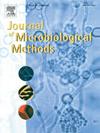Comparing DNA isolation and sequencing strategies for 16S rRNA gene amplicon analysis in biofilm containing environments
Abstract
Bacteria are primarily responsible for biological water treatment processes in constructed wetland systems. Gravel in constructed wetlands serves as an essential substrate onto which complex bacterial biofilms may successfully grow and evolve. To fully understand the bacterial community in these systems it is crucial to properly isolate biofilms and process DNA from such substrates. This study looked at how best to isolate bacterial biofilms from gravel substrates in terms of bacterial richness. It considered factors including the duration of agitation during extraction, extraction temperature, and enzyme usage. Further, the 16S taxonomy data subsequently produced from Illumina MiSeq reads (using the SILVA 132 ribosomal RNA (rRNA) database on the DADA2 pipeline) were compared with the 16S data produced from Oxford Nanopore Technologies (ONT) MinION reads (using the NCBI 16S database on the EPI2ME pipeline). Finally, performance was tested by comparing the taxonomy data generated from the Illumina MiSeq and ONT MinION reads using the same (SILVA 132) database. We found no significant differences in the effective number of species observed when using different bacterial biofilm detachment techniques. However, enzyme treatment enhanced the total concentration of DNA. In terms of wetland community profiles, relative abundance differences within each sample type were clearer at the genus level. For genus-level taxonomic classification, MinION sequencing with the EPI2ME pipeline (NCBI database) produced bacterial abundance information that was poorly correlated with that from the Illumina MiSeq and DADA2 pipelines (SILVA132 database). When using the same database for each sequencing technology (SILVA132), the correlation between relative abundances at genus-level improved from negligible to moderate. This study provides detailed information of value to researchers working on constructed wetlands regarding efficient biofilm detachment techniques for DNA isolation and 16 s metabarcoding platforms for sequencing and data analysis.

 求助内容:
求助内容: 应助结果提醒方式:
应助结果提醒方式:


